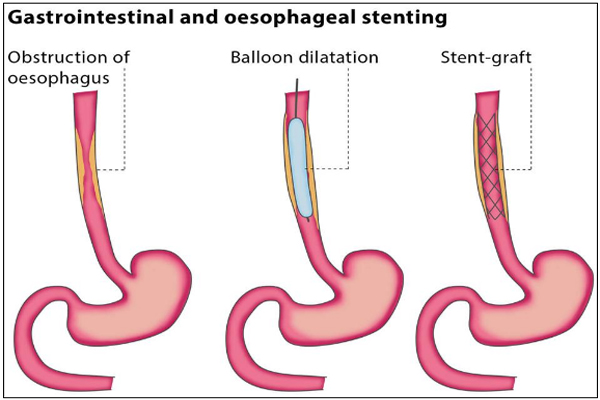Home → Stent Placement in GL Tract

The application of stents in the GI tract has expanded tremendously. Stent placement is the most frequently used treatment modality for palliating dysphagia from esophageal or gastric cardia cancer. Newly designed esophageal stents, including the Polyflex stent and the Niti-S double stent, have been introduced to reduce recurrent dysphagia owing to migration or nontumoral or tumor overgrowth. Stents are also the treatment of choice for esophagorespiratory fistulas, for proximal malignant lesions near the upper esophageal sphincter, for recurrent carcinoma after esophagectomy or gastrectomy and for sealing traumatic or iatrogenic nonmalignant ruptures, such as Boerhaave's syndrome and leakages following surgery. Stents in the latter patient group should be removed within 4-8 weeks after placement to prevent the formation of granulation tissue or hyperplasia at the stent ends. For gastric outlet obstruction, many case series have been published. Only two, small, randomized controlled trials have compared stent placement with gastrojejunostomy to date, and a large, randomized trial is currently being conducted in The Netherlands. Obstructive jaundice caused by a malignancy in the common bile duct can be treated effectively with plastic or metal stent placement. However, a prognostic score needs to be developed that guides a treatment decision towards using either of these stents. Finally, colonic stents are applied successfully for acute malignant obstruction as a 'bridge to surgery' in patients with tumors that are deemed to be resectable, or as a palliative treatment for patients with locally advanced or metastatic disease.